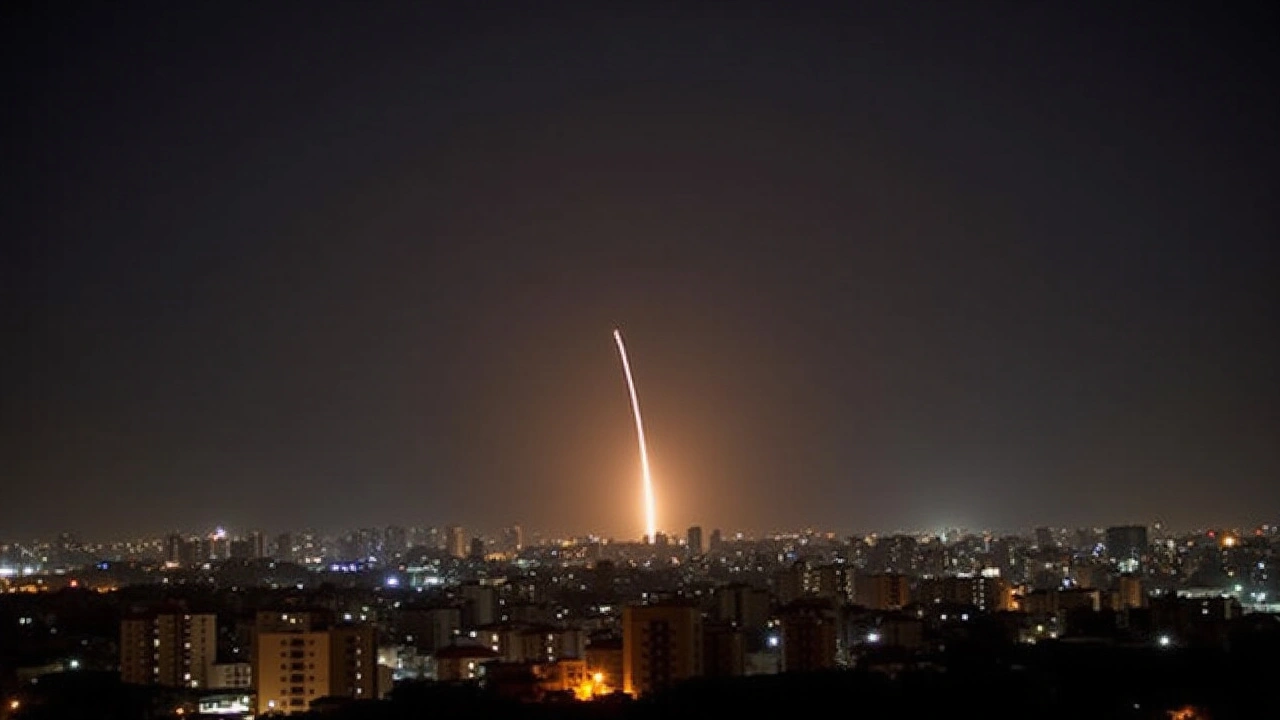Introduction to Israel's Iron Dome
In the realm of modern warfare, air defense systems have become essential to national security, and Israel's Iron Dome stands as a landmark in this field. Known for its efficacy in intercepting and destroying short-range rockets and artillery shells, the Iron Dome has been a crucial tool for Israel, safeguarding its citizens from aerial threats. The system was developed by Rafael Advanced Defence Systems, with significant backing from the United States. It was created amidst increasing threats, leading to a urgent need for a reliable defense mechanism against aerial assaults.
How the Iron Dome Operates
The Iron Dome is made up of several key components that work in concert to thwart incoming threats. The system includes detection and tracking radars, a battle management & weapons control center, and the missile-firing unit. When a threat is identified – whether it's a rocket, missile, or drone – the radars quickly track its path and inform the command center. This center then determines the potential points of impact and decides whether an interception is necessary. Upon making such a decision, a mobile missile launcher fires a counter missile designed to explode near the threat, destroying it with shrapnel. The entire reaction time, from detection to interception, is mere seconds.
Recent Tensions and the Iron Dome's Performance
Recent hostilities in the Middle East have once again put the Iron Dome in the spotlight. On October 1, 2024, Iran launched a staggering 200 missiles towards Israel, an act proclaimed to be retaliation for Israel's military actions against Hezbollah in Lebanon. Iran's supreme leader, Ali Khamenei, allegedly spearheaded this missile launch. Despite the intensity of the attack, the Israeli Defence Forces (IDF) reported that no injuries occurred, with the Iron Dome playing a vital role in neutralizing the threat. Iran, however, claimed that a vast majority of their missiles reached intended targets, which was strongly contested by the IDF.
Complexities of Missile Interception
Missile interception is never a straightforward task, especially with advancements in missile technology. Experts like Patrick Senft of Armament Research Services and Dr. Thomas Karako, who is associated with the Missile Defense Project at the Center for Strategic and International Studies, have noted that ballistic missiles present formidable challenges due to their speed and trajectory. The October attack included a new breed of missiles, including the hypersonic 'Fattah' missiles developed by Iran. These missiles add a layer of complexity to the interception process, pushing air defense systems like the Iron Dome to their limits.
Historical Performance and Efficacy of the Iron Dome
Since its induction, the Iron Dome's performance has been notable. It's credited with intercepting over 90% of the rockets targeting Israeli territories, significantly minimizing casualties and damage. For instance, in April, the system demonstrated an unparalleled interception rate, neutralizing 99% of 170 drones, 120 ballistic missiles, and 30 cruise missiles. These numbers highlight the system's reliability and the protective cocoon it provides to Israel amid ongoing tensions. Its success relies on continuous testing and upgrades, ensuring it stays one step ahead of evolving threats.
Broader Implications and Calls for Peace
The recent surge in missile attacks has raised genuine fears of a larger, more destructive conflict engulfing the Middle East. As nations worldwide watch these developments unfold, there is an increasing chorus for immediate restraint and diplomatic interventions. While the Iron Dome remains a formidable protective shield for Israel, it represents only a part of the broader geopolitical strategy. Leaders are advocating for peace talks and a ceasefire, emphasizing resolutions that limit the loss of life and promote long-term regional stability. The international community has a vested interest in curbing these hostilities to avoid further destabilization in an already volatile region.
Conclusion
The Iron Dome is not just a marvel of technological innovation; it is a critical component of Israel's defense strategy. Its role in preserving lives amidst missile threats is significant, epitomizing the delicate balance between military might and peaceful reconciliation. As tensions simmer and global leaders deliberate over the next steps, it remains clear that systems like the Iron Dome are here to stay, acting as sentinels guarding against the unpredictability of modern warfare.





